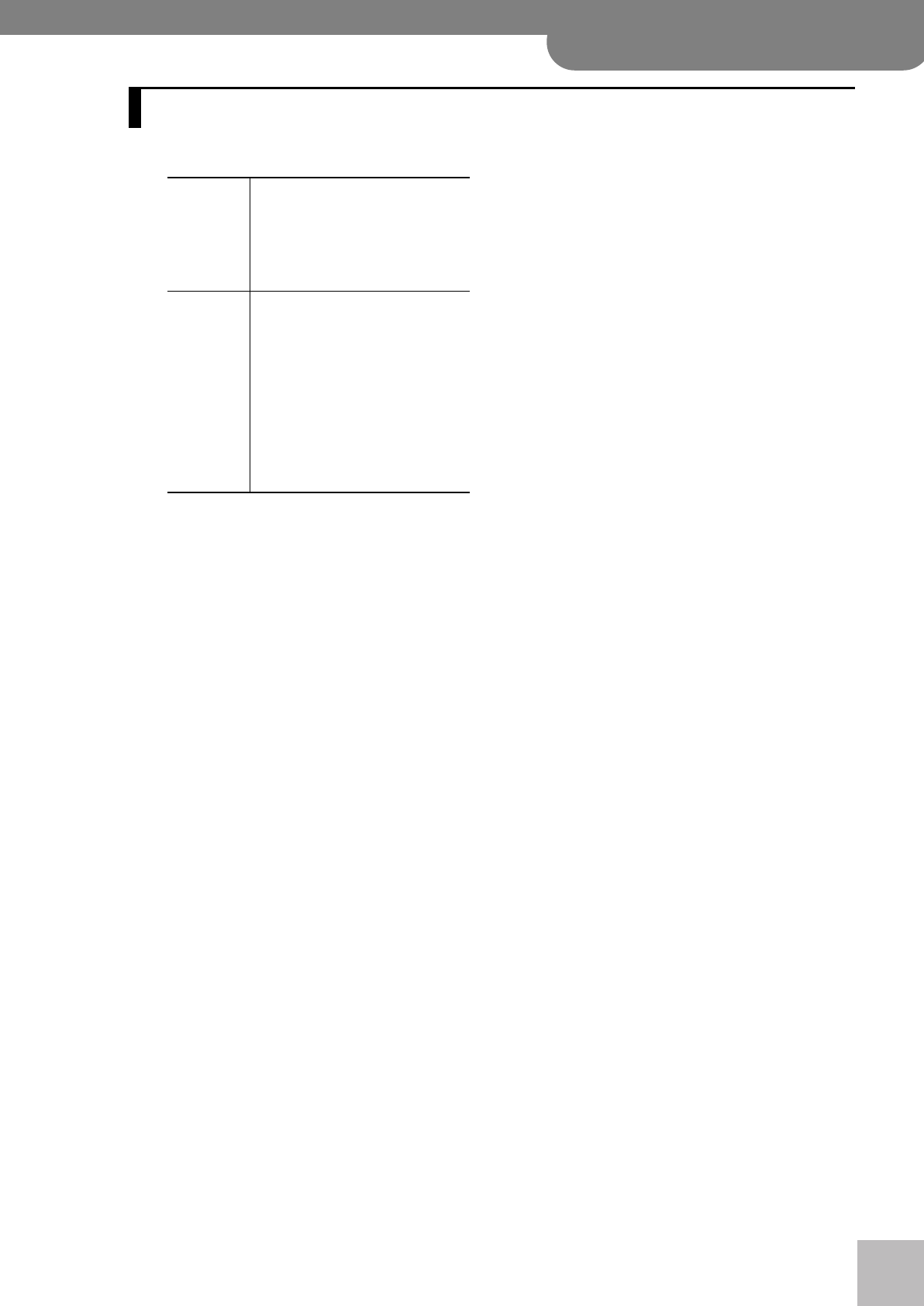
Specifications (Advanced)
V-Accordion
r
119
■ Keyboards
■ Bellows
New sensor for the detection of bellows pressure (high-
resolution pressure sensor)
■ Bellows resistance regulator
Wheel with fine adjustment
■ Sound source
Max polyphony: 128 voices
Wave ROM: 64MB of waveforms, expandable
Tones: 80 user programmable accordion Sets, each one
including: 14 Treble registers, 7 Bass registers, 7 Free
Bass registers, 7 Orchestra Bass registers, 7 Orchestra
Chord registers, 7 Orchestra Free Bass registers, 26
Orchestra sounds (49 in total, 26 assignable simulta-
neously)
128 Drum sounds (up to 6 simultaneously)
Treble reed footages: 7
Bass reed footages: 5
Chord reed footages: 3
Free Bass footages: 2
■ Organ sounds with harmonic bar simulation (“TW”)
Virtual ToneWheel technology
32 presets (Treble, Chord and Free Bass sections)
16 presets (Bass section)
1 user memory for each register
■ PBM (Physical Behavior Modeling)
Noises: stopping-reed growl, closing valve noise, left
button noise
Individual reed simulation: hysteresis threshold, Expres-
sion curve, pressure-variant filter, pressure-variant pitch
deviation
Reed sound wave switching: by bellows acceleration, by
note repetition speed
■ Musette tuning
Micro tuning presets: 16 (Off, Dry, Classic, F-Folk, Ameri-
can L/H, North Europe, German L/H, D-Folk L/H, Alpine,
Italian L/H, French, Scottish)
■ Effects
Reverb: 8 types, Chorus: 8 types,
Delay: 10 types, Rotary for orchestral organ sounds
(slow/fast)
“Cassotto” and “Sordina” simulation
Separate reverb, chorus, delay vibrato/chorus and rotary
effects for the TW organ section.
■ Panel controls
Knobs: Volume, Treble/Bass balance, Reverb, Chorus,
Delay, Encoder: [DATA÷ENTER]
Panel Switches: 14 Treble registers + Master + Orchestra,
7 Bass registers
Navigation switches: UP/DOWN, MENU/WRITE, EXIT/
JUMP
Other switches: SET UP/DOWN, SORDINA ON/OFF,
POWER
6 user-assignable function switches (last bass button
row)
■ Audio player/wave recorder
Plays back mp3/WAV files from USB storage device
Also contains an audio wave recorder with data storage
direct to USB storage device
■ Display
128 x 64 graphic, backlit LCD
■ Rated power output
2 x 25W RMS
■ Speakers
2 x 10cm speakers (neodymium transducer magnets),
2 tweeters
■ Connectors on instrument
OUTPUT sockets (stereo),
Multi-connector (towards external FBC-7 power supply/
footswitch unit/battery charger)
HEADPHONE socket (stereo),
USB port (Host port)
■ Power supply:
Rechargeable Ni-Mh battery pack (24V-4500mAh)
External FBC-7 power supply/battery charger: AC 110V,
AC 220V, AC 230V, AC 240V
Power consumption: 140W
■ Dimensions
Piano type: 423 (H) x 528 (W) x 275 (D) mm /16-11/16
(D) x 20-13/16 (W) x 10-7/8 (D) inches
Button type: 397 (H) x 506 (W) x 249 (D) mm /15-11/16
(D) x 19-15/16 (W) x 9-13/16 (D) inches
■ External FBC-7 power supply/battery charger
5 programmable foot switches (SET UP/DOWN, REGISTER
UP/DOWN, SUSTAIN)
Multi-core connector cable (towards accordion)
Expression pedal socket
MIDI IN/OUT/THRU sockets
OUTPUT sockets (L/Mono, R)
Connector for charging a battery pack
AC inlet
■ Weight (without straps, with battery pack)
Piano type: 11.5kg / 25 lbs 6 oz
20. Specifications
Piano-type Right hand: 41 keys, velocity sensitive,
aftertouch
Left hand: 120 velocity-sensitive bass
buttons
Modes: Standard, Free Bass, Orch.Bass,
Orch.Chord, Orch. Free Bass
Button-type Right hand: 92 buttons, velocity
sensitive
Treble modes: C Griff Europe, C Griff 2,
B Griff Bajan, B Griff Fin, D Griff 1,
D Griff 2
Aftertouch: generated with the Master
bar
Left hand: 120 velocity-sensitive bass
buttons
Modes: Standard, Free Bass, Orch Bass,
Orch Chord, Orch. Free Bass
FR-7x GB.book Page 119 Tuesday, August 25, 2009 10:58 AM


















